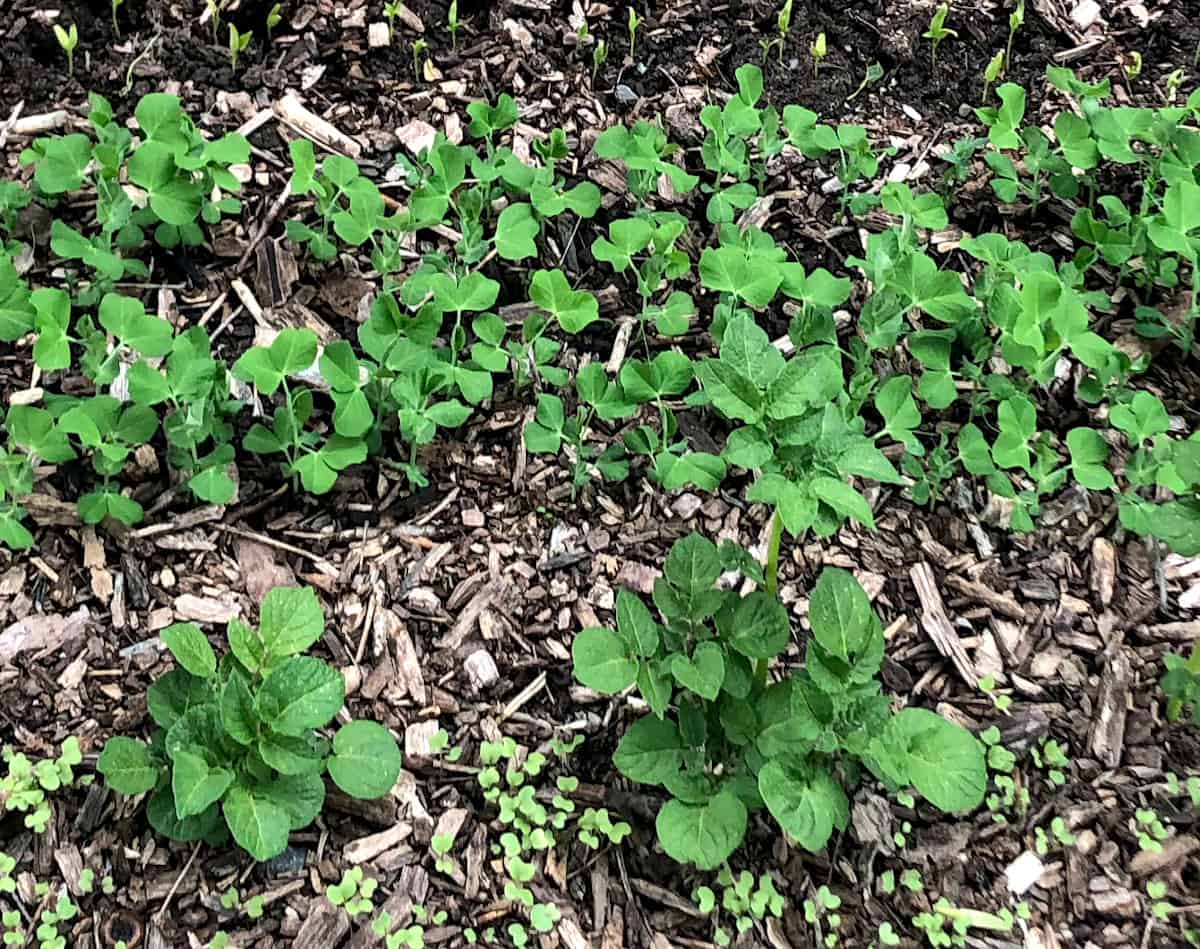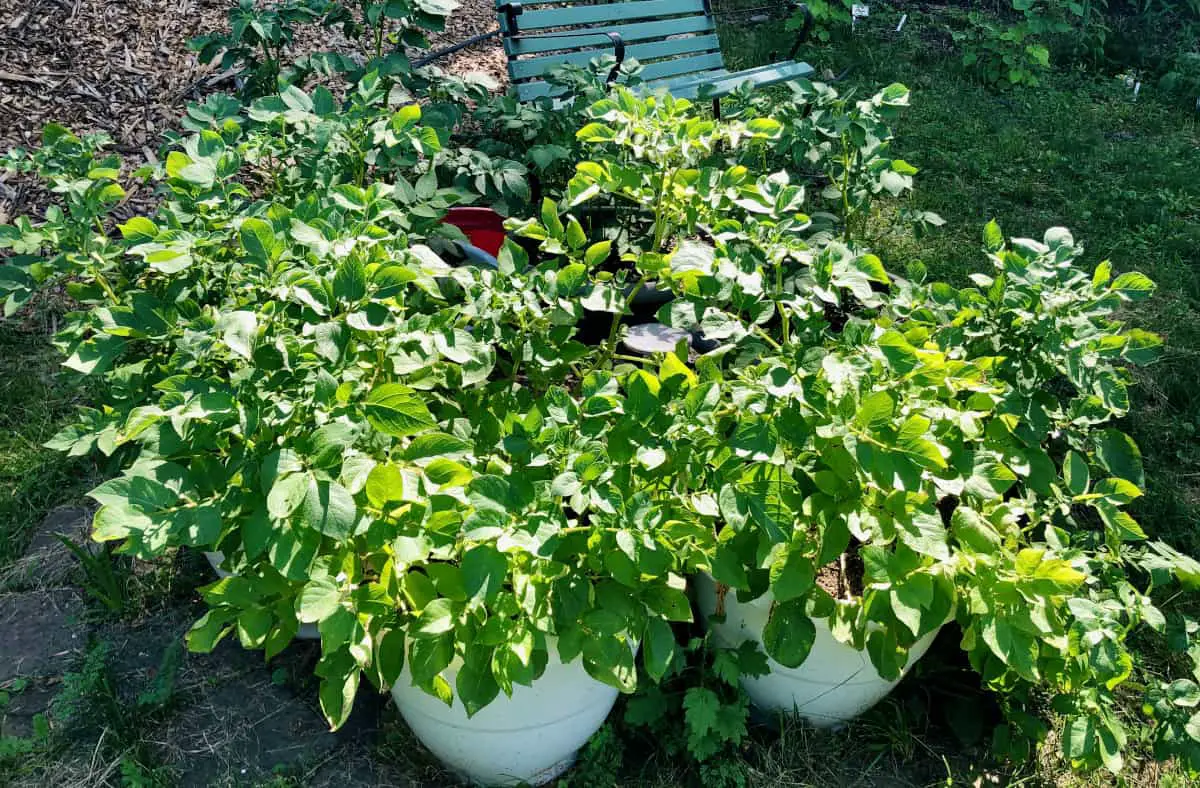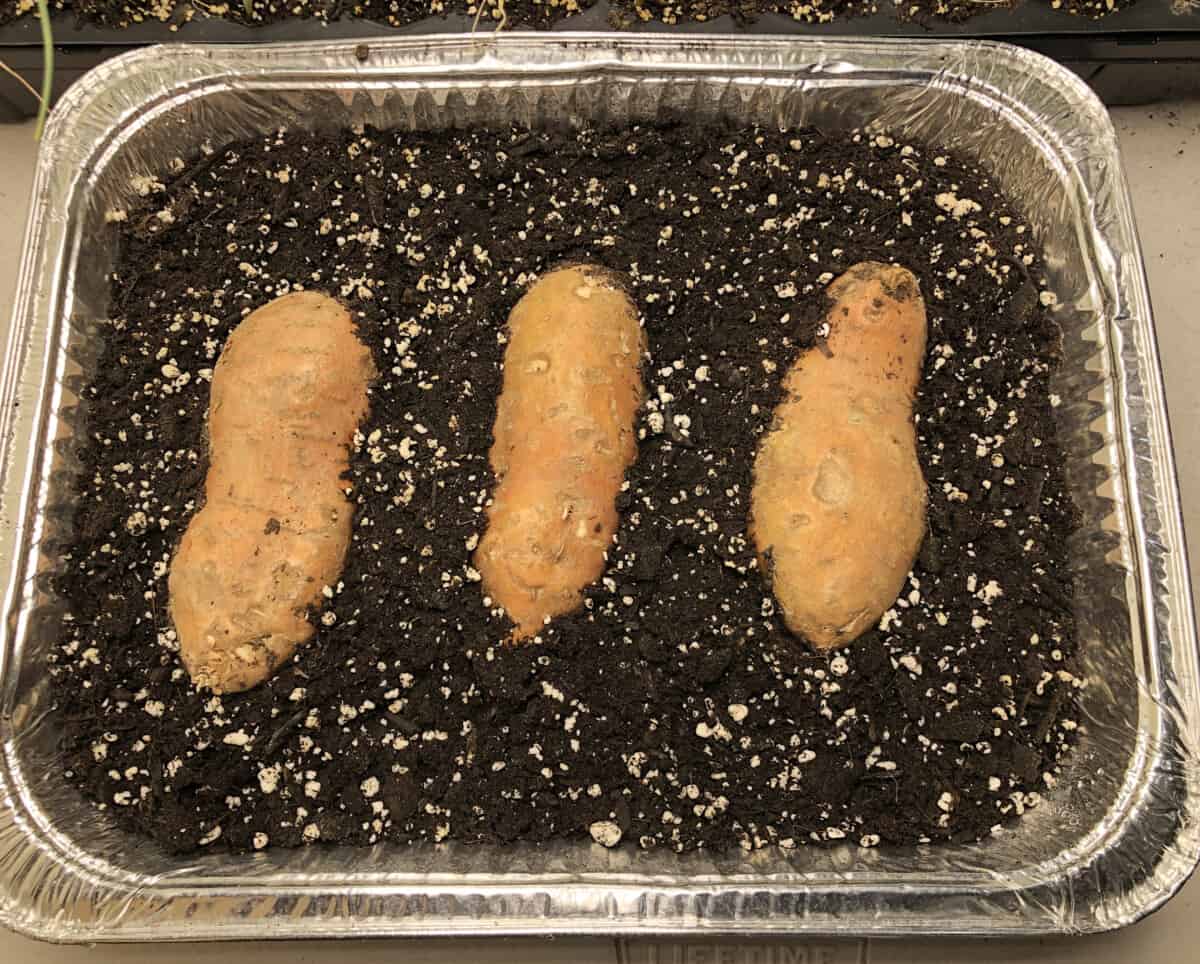April is one of those months when we gardeners finally get to get outside and into our gardens to sow seeds directly in the ground. What an exciting time of the year! Who has been waiting for this moment the whole winter? Me! April is the perfect time to sow the seeds of cool-weather crops directly into the soil in our growing spaces.
There is a vast number of vegetables that can be directly sowed outdoors in April, in zone 6 including:
- Leafy greens like lettuce, Swiss chard, spinach, arugula, kale
- Beets
- Radish
- Carrots
- Parsnip
- Spinach
- Peas
- Asian greens
- Mustards
- Cabbage
- Broccoli
- Cauliflower
- Potato

Some crops like root crops like to be directly sowed rather than sowed in cells indoors and then transplanted. Crops I like to direct sow in April in my garden are carrots, parsnips, celeriac, turnips, kohlrabi, radishes, beets, parsley, peas, Swiss chard, dill, and cilantro.
Can I plant potatoes in April, in zone 6?
Yes, you can plant potatoes in April, in zone 6. They are a cool-weather crop, but still quite sensitive to frost. Have frost protection handy if they sprout and there is a danger of frost at night or a danger of prolonged frost or snow.

I sowed my potatoes deep enough to be protected in case the soil surface freezes. But I will keep my eyes on them till the last frost date to be ready to protect them with a frost cover in the danger of frosty night or snow. If I sow potatoes in April, then I can success sow them again a couple of months later once I pull them out. In this way, I can have multiple harvests of potatoes.
Can I direct plant sweet potatoes outdoors in April in zone 6?
April is not a good time to plant sweet potatoes yet. Sweet potatoes are a warm-weather crop, and very sensitive to frost. In zone 6, there will be frosty nights in April for sure, and even some occasional flurries. If you are in zone 6, plan to plant sweet potatoes after the last frost date, when the danger of frost is completely over.

TIP: To speed up the germination process, and keep the moisture and warmth locked in the soil in which the seeds are sowed, cover the seeds. Use a wooden plank, cardboard, newspapers, frost cover, or plastic. By covering the seeds, you are locking in moisture in the soil that is so vital for the seeds to germinate. If the seeds are left uncovered the moisture would evaporate faster, the wind dries out the surface quicker too, and you would need to water more often. What the seeds need to germinate is moisture, warmth, and oxygen. By covering the seeds, you are creating a somewhat controlled environment for the seeds to have plenty of moisture and warmth till they break out of the shell. Once the seeds germinate, uncover the seeds so the new plants get the light that is much needed at that stage. I like to keep my fleece cover over my newly popped-up seeds just to keep them a bit warmer, especially during cold April nights.
TIP: Protect your direct sowed seeds from pests! If you live in a place where you need to combat many wildlife pests as I do, covering the seeds till the seedlings are well established is vital! I cover my seeds also to protect them from chipmunks and other rodents who like to eat them. Especially my peas and other plump seeds. They use to dig the seeds out and eat the inside. They also like to dig out juicy seeds like cucumbers and eat up the insides. I cover my seeds as soon as I water sow and water them. I keep them covered using a garden fleece to protect my seeds and tender seedlings. Once the seedlings are out, the wild rabbits come and eat them or chipmunks just snip the seedlings across. By covering the tender seeds and seedlings I protect my garden from complete havoc. In fact, I keep my garden beds covered the whole season using a garden mesh over a hoop. I do not think there is another place than where I live that has as many pests as we do. If you can name a plant, I can name a pest for it, be sure we have it here!
What not to direct sow in April in zone 6
Do not direct sow in April, in zone 6, and warm crops yet. The soil is not warm enough or the soil temperature can fluctuate. The seeds would just sit in the ground or get eaten by the pests. There is a possibility for the seeds to sprout if there are a number of warm days in a row, but with a high potential of cool weather still prevailing in April your tender crop would be either slowed down or totally wiped out by cold weather and frost. Thus, you would be risking wasting your seeds, time, and labor. Hold on for a few more weeks and plant warm-weather crops after the last frost date or around it to set your seeds for success.
I invite you to share with us some of your favorite cops you like to direct seed in April in zone 6!
SOME GOOD READ:
How to find out if the seeds are viable

